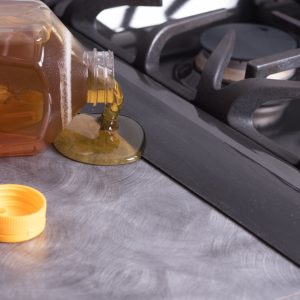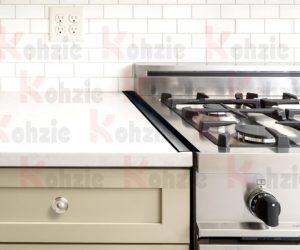The smell of smoke and nicotine can stick to interior walls, window screens, and household linens and carpets, creating an unpleasant smell throughout the home. Smoke odors are caused by leftover resin and tar, which can be difficult to deodorize. Removing smoke odors from your home may require a total cleaning of the house, purifying the air, and even replacing carpets and paint if the smoke damage is particularly extensive
Preparing to Deodorize Your Home
1- Remove all sources of smoke. Remove cigarette butts, ends of cigars, ashtrays, etc. from your home and outside space. Leaving these items in your home will lead to continual absorption of the smell of smoke. Dispose of these items after they have been completely extinguished. Place them in a grocery bag and tie it closed before putting it in an outdoor trash bin.
2- Open all windows and doors to air out the house. Do this frequently throughout the cleaning and deodorizing process.
-You can place fans strategically throughout your home for increased airflow. Point your fans in corners of the room that may not have good airflow to push air out of the room. Or, point fans toward doorways and windows to help stale air leave the home.
3- Purchase deodorizing products. Some products will advertise things such as odor control or odor removal. However, it’s important you use products that have a cleaning agent included. Products that simply mask odors will not get rid of the smell of smoke. Look for products that have:
-Baking soda. Baking soda naturally neutralizes odors and does it by bringing acidic and basic odor molecules into a more neutral pH or state.
-Activated charcoal. Charcoal is used often to filter dirt and particles from water but it also acts as a great deodorizing agent that absorbs odors and smells.
-Hydrogen peroxide. Hydrogen peroxide deodorizes by giving oxygen to a contaminated or smelly area. However, this chemical can act like bleach and should be used carefully and only on certain surfaces. Do a test run on a small area before using it extensively?
Removing Odors from Carpets, Cloth, and Linens
1- Gather all your clothing, duvets, pillows, and curtains. Anything that is cloth or linen and can be washable should be gathered into bags to be washed.
You may think a certain item doesn’t smell, but you may have gone nose blind to it. This means you have gotten used to the smell of smoke and can’t distinguish it from the environment anymore. It’s safe to say that if something in a home smells of smoke, most or all items will probably smell like smoke.
Wash or dry clean all items. It’s important to clean your clothes as well as cloths, linens, and pillows before you plan to clean the rest of the home. Cloths and linens are able to soak up odors more effectively than other types of materials. By getting them out of the way, it makes cleaning other surfaces easier.
Consider washing and storing your clean cloths and linens outside of the home. Bringing them back into the home after cleaning runs the risk of your items soaking up smoke odors left in the home.
2- Remember to clean, wash, or replace your curtains and shades. Many people forget to clean curtains and shades which are prime spots for tar and resin to settle and permeate into. Take down your curtains or shades and wash them. You can also buy new shades if yours are particularly old and smelly.
Certain wall hangings may also be made of fabric or canvas material. Remember to take these down as well and clean them with mild soap, water, and a wash cloth. Simply wipe them down and store them outside of the home until you finish the deodorizing process.
3- Survey your carpet. If it is extremely dirty and the smoke smell is intense, consider replacing it. If you cannot, clean it by:
-Shampooing it. You can rent a carpet steam cleaner and shampoo the carpet yourself. Or you can hire a professional to clean the carpet for you.
-Sprinkling baking soda. Sprinkle a liberal amount of baking soda on top of your carpet surfaces and leave it to soak for a day. The baking soda will absorb the smell of smoke and any moisture in the carpet. Then vacuum the carpet to remove the baking soda. You can do this several times a week until the smell disappears.
4- Sprinkle your fabric-covered furniture and carpets with baking soda. You may also choose to use a strong chemical cleaner. This deodorizing product is used by professionals who are trying to improve houses after a fire.
If you can remove the cushion covers, wet them and wash by hand or in a washing machine with a baking soda mixture. Let them dry a little, then place them back on the cushions when they are still slightly wet. This allows them to stretch to the appropriate size without causing mildew.
Removing Smoke Odor from Household Surfaces
1- Use vinegar or diluted bleach to clean non-fabric surfaces. Bleach, and especially vinegar, do well to break up the tars and resins in cigarette smoke. The smell of bleach and vinegar may be off putting at first, but unlike smoke, these odors will dissipate in time.
Mix equal parts of white distilled vinegar and warm water to create a cleaning solution.
Mix 1/2 cup (115 mL) of chlorine bleach to 1 gallon (4 L) of water to clean surfaces like sinks, showers, bathtubs, countertops, glazed tile, vinyl, and floors. Always rinse surfaces with water thoroughly after cleaning, before use. Do not use bleach on the same surface that you applied the vinegar mixture to
2- Wash the floors, ceilings, window screens, walls, and other fixtures. You may need a ladder to reach all the washable surfaces in your house.
Don’t forget to wash down interiors of closets and cabinets as well as the walls of the basements, hallways, cupboards, and drawers.
3- Wipe all the wood, plastic, and metal furniture and appliances with distilled white vinegar. Put the vinegar in a spray bottle and wipe it clean with a rag. Follow up by rinsing with water and drying with a clean rag, if the furniture is delicate.
Place several drops of lavender, citrus, or rosemary essential oil to offset the smell of the vinegar. If you do not choose to do this, the vinegar smell will dissipate as it deodorizes furniture.
4-Dust or rinse all your Knick knacks. Simply wipe them or wash them in mild soap. You may want to remove them from the home until all surfaces are clean and deodorized.
Repainting the Walls
1- Wash your walls. You can use a variety of products or cleaning solutions to wash your walls and remove dirt, grease, and odors.
Most professional painters use TSP, or trisodium phosphate, to clean walls Just mix 1 cup of TSP to 20 cups of water or buy a TSP spray to apply to your walls and wipe with a washcloth. Be sure to use gloves when you’re using TSP.
2- Use a deodorizing primer on washed walls. Products like Zinsser Bullseye and Kilz are an essential step to removing smoke odors that have been around for a long period of time. Simple repainting will not remove the smell and will just trap smoke odors within the paint.
3-Consider painting other parts of your home. For example, if an old piece of furniture smells smoky, you can wash it, prime it with a deodorizing primer, and paint it to get rid of the smell.
Purifying the Air
1-Replace your air filters, furnace filters, and air conditioning filters. Air that is forced through your home will still contain smoky smells, so replacing any and all filters will begin to purify the air and move clean, fresh air into the home.
You can clean filters in TSP solutions. While wearing gloves, simply soak the filter in a TSP solution and agitate it for no more than an hour. Use a brush to further rid of any dirt or remaining odors. Rinse thoroughly after cleaning.
2-Buy an air purifier. You can choose to install an air purifier in your home’s forced air system or you can buy purifiers that can be placed in a single room. Make sure to take into consideration the size of the room or home, and purchase equipment that is the right size and strength for the area.
3-Place bowls of activated charcoal around the house. Activated charcoal works to absorb odors over time. Place bowls of charcoal around places within your home that cannot be aired out, such as a windowless room or cupboard space. Over time, the charcoal should soak up the odors.


